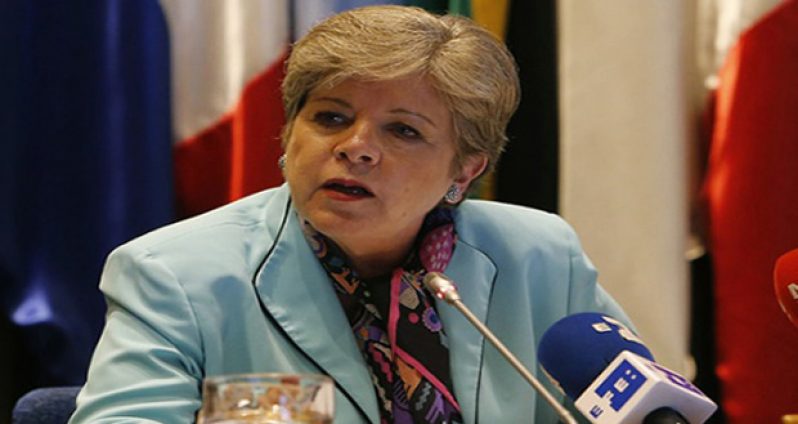Guyana economy is projected to grow by 3.4 % next year, the Economic Commission for Latin America and the Caribbean (ECLAC) has said, although predicting that the economies of Latin American and Caribbean will contract -0.4% on average in 2015 and will grow just 0.2% next year.Regarding this year’s growth, government had said that the country will achieve the 3.4% it had set earlier in the year, but ECLAC has revised this down to 2%. This, the commission said is due to complex external scenario.
Last week ECLAC presented the annual report Preliminary Overview of the Economies of Latin America and the Caribbean 2015, in which it updated the estimates given last October and called again on the region’s countries to invigorate economic growth through greater investment and higher productivity. “It is necessary to resume growth and reverse the contractionary investment cycle in a context of slow global recovery and a decline in trade,” Alicia Bárcena, Executive Secretary of the Economic Commission for Latin America and the Caribbean (ECLAC), said during a press conference where the document was presented.
The senior United Nations official underscored that the agreements reached at the recent Conference of the Parties (COP21) of the United Nations Framework Convention on Climate Change held in Paris will enable countries to provide incentives to innovation and investment in new sources for the production of renewable energy, which has huge potential in the region.
“In the current context, active fiscal policies to promote smart adjustments gain greater relevance: analysing the level of public spending as well as its composition to avoid excessive cuts to public investment and social spending; reviewing the structure of fuel subsidies and tax incentives in order to strengthen instruments for promoting investment and financing social spending; and reducing tax evasion/avoidance, which on average is equivalent to 6.3 points of regional Gross Domestic Product (GDP), or $320 billion dollars,” Bárcena added.
According to ECLAC’s report, the region will have to face diverse scenarios and risks related to the global economy in 2016, which will undoubtedly condition its economic performance. On the external front, global growth is forecast to remain slow and reach 2.9%, while uncertainty persists regarding China — one of the region’s main trading partners — which will continue decelerating to 6.4%.
Compounding uncertainty over the global economy is low growth in international trade (1.5% in 2015 and 2.5% forecast for 2016). In addition, the prices of the commodities that the region exports will stay low, meaning that Latin America and the Caribbean will once again suffer a deterioration in its terms of trade in 2016, especially in countries that export hydrocarbons and minerals, the document states.
In financial terms, ECLAC explains that the volatility and uncertainty observed in 2015 will continue next year, which means that some emerging economies will still have difficulty obtaining resources in international markets. On top of that, there will be impacts from the steady appreciation of the dollar and the rise in United States interest rates. As in previous years, external conditions have a highly differentiated effect in the region, which will show marked heterogeneity. While Central America will grow around 4.3% in 2016, South America will see its GDP shrink -0.8%, mainly due to the expected contractions in Brazil (-2.0%) and Venezuela (-7.0%). Meanwhile, the English-speaking Caribbean will grow 1.6%.
According to ECLAC’s projections, Panama will lead regional growth next year with an expansion of 6.2%, followed by Dominica and The Dominican Republic (5.2%), Saint Kitts and Nevis (4.7%) and Bolivia (4.5%). It is expected that Nicaragua will grow 4.3%, Cuba 4.2%, Guatemala 4.0%, Peru 3.4%, Costa Rica and Honduras 3.3%, Colombia and Paraguay 3.0%, Mexico 2.6%, Haiti 2.5%, El Salvador 2.4%, Chile 2.1%, Uruguay 1.5%, Argentina 0.8% and Ecuador 0.3%.
Finally, in its Preliminary Overview 2015 ECLAC emphasises that it is essential to advance towards fiscal rules that prioritise capital spending. It adds that designing efficient anti-cyclical schemes of investment protection is extremely important to face the region’s macroeconomic volatility, as well as to reactivate aggregate demand and maintain social spending.




.png)









